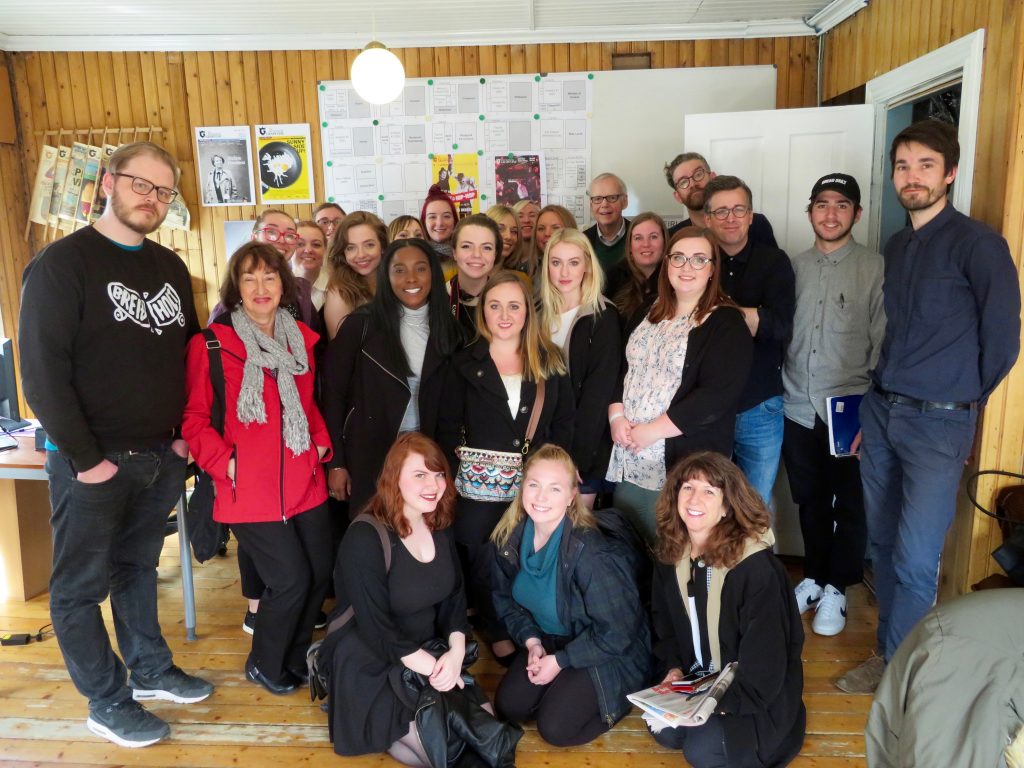
By Kristin Snapp
In true entrepreneurial spirit, the minds behind the Reykjavik Grapevine saw a gap in the mainstream newspaper market and decided they’d fill it in themselves.
That gap is culture – music, visual arts, performances. In 2003, current publisher Hilmar Steinn Gretarsson started the Grapevine with what was a grassroots music newspaper.
With 30,000 residents from abroad and a booming tourism market, the Grapevine shifted to a tourist publication that natives read as well. It is now the leading tourism publication in Iceland, with issues hitting newsstands all over the country.
Fourteen years after Gretarsson had the idea for a music newspaper, the Grapevine still has no direct competition because the big newspapers don’t cover culture – or, not as thoroughly as the Grapevine does.
Although there is no active competition, the Grapevine still faces challenges – like walking the line between writing news for natives and for tourists.
“We tend to overwrite for Icelanders and underwrite for tourists,” managing editor John Rogers said.
But today, The Grapevine is much more than just a newspaper. The small staff created a website and has a social media presence. The Grapevine has even created apps – one listing all the happy hours in Reykjavik and another one that randomly selects a restaurant.
The Grapevine publishes a “Best of” edition yearly, and each March it publishes a “Best Product of the Year” edition, which is design-related. It also has special editions for the Icelandic Airwaves, a major music festival sponsored mainly by Icelandic Air.
Being an independent newspaper that covers culture in-depth and takes on a humorous tone means those working at the Grapevine have minimal rules to follow.
“Rules of news photography don’t really apply to us,” Sveinbjörn Pálsson, Grapevine art director, said.
Pálsson was specifically referring to the Grapevine’s standards on Photoshopping images – The only rule is that the photos are never edited cosmetically.
“Photos are a big part of it. You have to see the article. The words are only half of it,” Art Bicnick, photo editor, said.
But Adalsteinn Jörundsson, sales director of The Grapevine, has stricter rules for himself when it comes to advertisements.
“We hold our advertisers to the same standard as ourselves,” Jörundsson said. “We don’t want to be boring, but we also want to stay truthful.”
The print edition of the Grapevine does not use any sponsored content, but does allow sponsored content on its website – although it typically comes in the form of photo galleries that readers would be interested in regardless.
“The average reader, when he is reading the Grapevine, he wants to read the journalist,” Björundsson said. “If it is obviously paid for, he will not like it. But online, sponsored content is welcomed as a time-killer.”
And, differing from most newspapers, the Grapevine still makes the majority of its money off the physical newspaper. The website is not losing money, but the primary source of revenue comes from the print edition.
“This magazine is an absolute freak,” Pálsson said. “The content and the advertising are an absolute mismatch,” referring to the newspaper that covers culture stories but advertises bus tours.
The staff of the Grapevine surprised students, though – The people behind a successful publication never completed their college educations. For most media jobs in the U.S., even at entry level, a bachelor’s degree has become a prerequisite.
Fourteen years later, the Grapevine offices are still located on the top floor of a small building in downtown Reykjavik – a space many students on the visit compared to the Point Park Globe’s newsroom.
“We try to be in a small office so we can control everything,” Gretarsson said, noting that they did try bigger buildings.